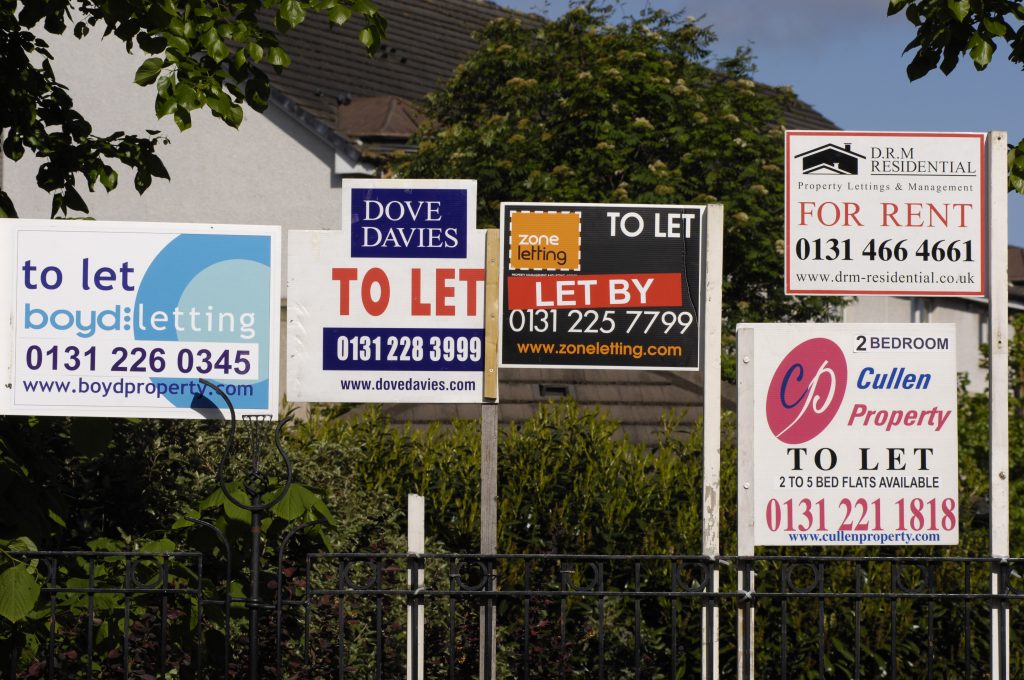Letting professionals say “frenzied” rental market faces landlord exodus

SCOTLAND’S private rental sector is in the grip of an unprecedented squeeze – with demand outstripping supply across the country and sending rental prices soaring to record levels.
Now experts behind a forensic report into the state of the private rental market have warned that a series of further events may trigger greater turbulence and increase pressure on tenants.
Highly respected as the barometer of Scotland’s rental market, the latest Citylets quarterly report shows that the average monthly rent across the county rose by 5.2% to £869.
The figures, covering the last quarter of 2021, also show that available properties were being snapped up at record speeds, with 40% of properties let within one week and 83% taking less than a month to be let.
It is feared that many landlords are planning to sell up while the property sales market is buoyant, while aiming to avoid a wave of greater regulation expected in the market. That will further constrict the supply of available homes.
Thomas Ashdown, Managing Director of popular property lettings portal, Citylets, revealed that the numbers of available properties being advertised was down two thirds on the same period just three years earlier.
He added: “High levels of rental activity continued to the end of 2021, sending stock levels down to record lows across Scotland. Competition for property to rent was frenzied in many locations. The average stock levels over Q4 2021 were just 32% compared to the same quarter in 2018.”
Gillian Semmler, Public Relations Manager at Citylets, added: “It may have been the festive period during Q4 but it was challenging to find anything to cheer.
“Even pre-Omicron, supply of rental properties was stymied in the face of increased anxiety around the deteriorating quality of life due to the cost of living, and worries over access to basic commodities such as fuel. It wasn’t perhaps the best time to make a house move.”
The pattern was the same across one, two, three and four-bedroom homes to rent – with all seeing significant rises in the average monthly rent. In fact, four bed properties saw the greatest rise across a five-year period, with rents up by 24.2%.
Increased competition for properties of all sizes also meant rental homes were on the market for much shorter times. The Citylets report showed that Time to Let (TTL) averaged just 16-19 days across all property sizes.
The changes were recorded across Scotland with Glasgow, Edinburgh and Dundee all showing increases in rents and dramatic drops in TTL. In Aberdeen, rents were up modestly overall through the Granite City with rises again for the larger properties.
Citylets says the record low stock levels across Scotland mean the balance of supply and demand is currently unfavourable to tenants in many areas. Problems were exacerbated by a later than usual student season adding further pressure to supply of larger properties.
Meanwhile, letting agents are concerned the prospect of a further shake-up in the market is likely to drive out many landlords, creating further pressure. In December, the Scottish Government opened its latest consultation on the sector, A New Deal for Tenants – Draft Rented Sector Strategy, which seeks to improve accessibility, affordability and standards.
However, many small scale landlords fear that it will herald a double whammy of greater regulatory burdens and lower profits – prompting many to consider selling up.
Brian Gilmour, of independent Glasgow letting agent Indigo Square, said: “The biggest issue affecting the Glasgow rental market has been availability of stock. House price rises have allowed many landlords to ‘cash-in’ and take profit out of their properties, however, these sold properties have not been replaced in sufficient numbers and we have seen a shrinkage in the PRS.
“This shortage has been compounded by the impact of Covid and the lack of people moving, plus restrictions on evictions limiting abilities of landlords to move on tenants.”
Callum MacGregor, New Business Director at Braemore, said the Edinburgh property market was also affected by a “severe lack of stock” for most of 2021. He added: “We are still craving new landlords to meet this huge demand from potential tenants. Rents are up and the standard of tenant is superb so it’s easy to see why investors still see Edinburgh as such a strong market.”
Eilidh Finlayson of Dundee property management company Finlayson Gore, said the City of Discovery was also in the grip of a supercharged market. She said: “We have also experienced a strong trend of tenants looking for more rural properties with a huge premium on outside space and home working possibilities.”
And in Aberdeen, Adrian Sangster, Leasing Director at Aberdein Considine, said: “Unless there is a dramatic change, low availability of stock will remain the biggest challenge for those looking for a home in the area.”
The Citylets rental report was launched in 2007 and has since become a respected guide for housing professionals including social housing and public policy makers. The report and associated rental maps are available for download here: www.citylets.co.uk/reports